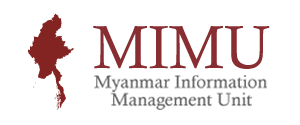Report
480 Views
Climate, Environmental Degradation and Disaster Risk in Myanmar: a MIMU Analytical Brief (May 2022)
June 9th, 2022 •
Author:
Myanmar Information Management Unit
•
2 minute read

This Analytical Brief focuses on the changing landscape of Myanmar in terms of climate, environmental degradation and disaster risk based on a review of recent research, hazard modelling and available data. It reviews the changing areas and populations at risk of exposure to natural disasters.
Summary
- Myanmar is one of the of the world’s most affected countries in terms of natural disasters, and among the most vulnerable to new disasters in the years to come. In addition to significant loss of life, livelihoods, and property, natural disasters are estimated to cost up to 3% of Myanmar’s annual GDP, and the longer-term impacts may be still greater.
- Changing climate and environmental degradation are influencing the frequency and severity of natural hazards in Myanmar, with predictions of more frequent and more severe floods, storms and droughts. Loss of natural ecosystems such as mangroves and forests, rising average annual temperatures, and more intense rainfall are all factors which could increase the impact of natural disasters on large numbers of Myanmar’s population.
- Extreme weather events do not become disasters on their own – the level of impact is influenced by the vulnerability of the affected community. Densely populated districts with less infrastructure investment were found to be key vulnerability hotspots. Populous coastal areas in Rakhine State and Ayeyarwady and Yangon Regions were found to be at risk of a wider variety of destructive events than other areas.
- Activities aimed at disaster risk reduction, disaster preparedness and response in Myanmar should carefully consider current as well as projected disaster risks. Further research and data collection are needed to develop effective approaches that can reduce the impact of climate change and environmental degradation on disaster risk for communities. More can also be done to create a shared understanding of vulnerability and how best it can be measured given limitations in available data.

